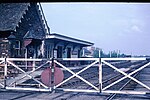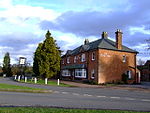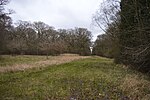Middle Claydon

Middle Claydon is a village and civil parish in Buckinghamshire, England. The village is about 5 miles (8 km) south of Buckingham and about 3.5 miles (5.6 km) west of Winslow. Administratively, the parish is within the remit of Buckinghamshire Council, the unitary authority for most of the county. The toponym "Claydon" is derived from the Old English for "clay hill". The affix "Middle" differentiates the village from nearby Steeple Claydon, and East Claydon, and from the hamlet of Botolph Claydon. The Domesday Book of 1086 records the Claydon area as Claindone. The Church of England parish church of All Saints is in the grounds of Claydon House, a National Trust property. The house was the home of Sir Edmund Verney, an English Civil War Royalist, and of Florence Nightingale.
Excerpt from the Wikipedia article Middle Claydon (License: CC BY-SA 3.0, Authors, Images).Middle Claydon
Queen Catherine Road,
Geographical coordinates (GPS) Address Nearby Places Show on map
Geographical coordinates (GPS)
| Latitude | Longitude |
|---|---|
| N 51.9257 ° | E -0.9539 ° |
Address
Queen Catherine Road
MK18 2EU
England, United Kingdom
Open on Google Maps









